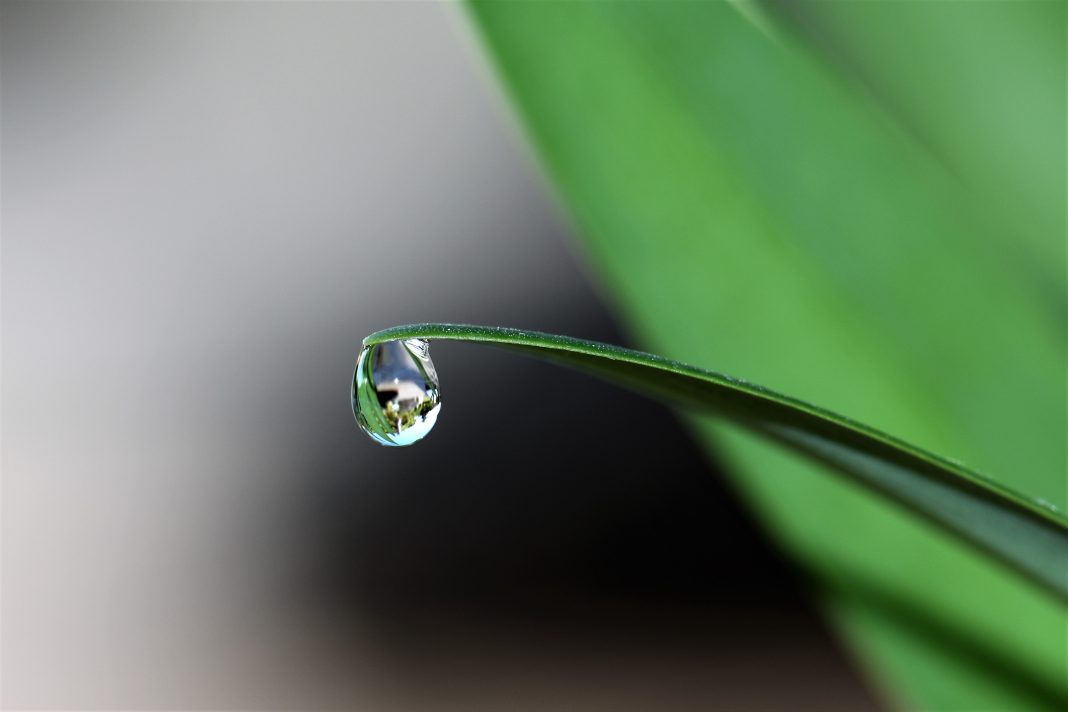| Issue #154 • July/August, 2015 |
As most people are already aware, hydroponics is the practice of growing plants without soil. This is done by using a water-based nutrient solution to deliver the necessary nutrients that plants need for development. The science of growing plants without soil is actually several hundred years old, though the term hydroponics was first used at the beginning of the 20th century when commercial applications began to appear.
While the history of hydroponics is fascinating in and of itself, this article is about practical applications which you can implement at home. I will outline several simple systems that I have built and go over what worked and what did not, along with some ideas for improvements. These are systems that can be put together by almost anyone with basic do-it-yourself skills.
System 1
The first and most basic system I ever constructed was simply a clay pot filled with gravel placed over a fish tank and seeded with some old lettuce seeds. I happened to have a small pump scavenged from a broken water sculpture which I used to pump the dirty water from the fish up through the gravel bed.

At the time, I was actually trying to filter the water for the benefit of some goldfish I had gotten rather than trying to grow food. The entire system was literally thrown together with a beer in hand, from whatever I had lying around my condo at the time. Despite the slipshod manner in which it was thrown together, it succeeded in producing several salads for me through the winter with little additional input other than feeding the fish.
As the effluents from fish were used to provide fertility, this type of system is technically termed “aquaponics,” which many readers are probably familiar with. This design, however, could easily be implemented with a standard nutrient solution.
The low flow rate of the miniature fountain pump used on this first system was ideal for a continuous flow system. In this type of system, the pump runs all of the time and provides a continuous trickle of water up to the plants above. A pump with a faster flow rate would have required a timer as well as more complex plumbing.
As mentioned before, this system was successful in growing an intermittent supply of salad greens, though it was not highly productive. I suspect that this was in part due to a lack of adequate lighting at the time. Given better natural sun or artificial light, I am sure it would have done much better.
One other issue I had with this system was that the solid waste from the fish would build up over time inside the pump impeller. This was not a huge issue, but it did require me to clean the pump periodically.
The primary reason I mention this early system is that it proves you can build a simple hydroponic system without any significant financial investment. Such a system could even be a good learning tool for children.
The main strength of this first design is that it needs no special components. If you do not have a mini fountain pump on hand, then an air lift pump would be ideal for this application, and would probably clog far less often. If you are not familiar with the concept of an air lift pump, it is a simple arrangement of thin air tubing that uses low pressure air to raise water.
System 2
I have been using this system each winter for the last three years, with very good success. It is a flood and drain system that I specifically built for the purpose of growing salad greens in the colder New England months. I was able to construct this system for less than $100, though the exact cost will depend on what you can scrounge. For comparison, commercially-available systems of similar size have price tags starting at several hundred dollars.
Though the design has evolved slightly each year, this system has been quite successful in growing lettuce and other greens.
This system uses two Rubbermaid dish basins as the grow beds, which are supported by a wooden frame built on an old fish tank stand. These basins are fitted with overflow risers that limit the maximum water level when the pump is filling them.
To circulate the solution in this system, I purchased a small 80-gallon-per-hour (GPH) pump at Harbor Freight for less than $10. This pump was set on a modified mechanical timer to periodically flood the grow beds every 35 to 40 minutes.



In my second system, I grew lettuce, Swiss chard, and basil in four types of growing medium: sand, gravel, perlite, and clay pebbles. I believe the tomato was a cutting taken just before frost killed the outside garden.
The basic operation of this system is as follows: The timer turns on the pump for approximately one to three minutes, depending how you set it. During this period, the nutrient solution is pumped up into the grow beds via supply lines that are mounted in the bottom of the basins. The solution fills the beds until it reaches the level of the overflow riser, at which point the surplus solution drains back down into the reservoir until the pump turns off. During this time, the plant roots soak in the solution. Once the pump turns off, the solution in both basins drains through the supply lines by back-flowing through the pump.
In my first version of this system, I simply filled one grow bed with gravel and the other with sand. The plants didn’t do as well in the sand as the gravel, and replacing individual plants was a little impractical. In my second version of this system, I filled plastic pots with various growing media and placed them inside the basins. As a result, I was able to compare gravel, sand, clay pebbles, and perlite.
In my next version of this system (which I plan to start later this summer), I intend to go back to directly filling the beds, but this time using clay pebbles. These seemed to work the best for me. If you cannot find them, gravel also works well but adds substantial weight; the bottoms of the dish basins will require additional support. As for the other two types of media, I found that plants grew very well in the perlite, but it tended to float and ended up down in the nutrient reservoir. The plants grown in sand performed the poorest. I suspect this is because it does not drain well enough for this type of system, causing root rot. Another drawback of both the perlite and the sand was that they tended to grow algae.
The construction of this system is fairly flexible, though there are a few tricky parts.
The most important component of this system is the overflow riser. This is the piece of PVC pipe that extends up from the drain hole and limits the level to which the bed will flood when the pump turns on. It is very important that the drain and riser are sized sufficiently larger than the supply lines to ensure the ability to drain the excess solution provided by the pump, or you will wind up with funny-colored water on your floor and unhappy plants. If you have a spouse, he or she will not be happy either.
In the system I settled on, the drain is ¾-inch PVC connected to segments of garden hose, while the supply lines are 3/8-inch plastic tubing. This seems to work very well with the 80-GPH pump.
One of the most challenging design aspects I encountered was finding a fitting large enough to accommodate the overflow riser which could also be easily mounted in the bottom of the grow beds. In the first version, I modified parts intended for a toilet reservoir. This worked, but required quite a bit of modification and was not as nice-looking or adjustable as I would prefer. The two toilet risers also cost about $12 each.
What I now use is a common PVC fitting that adapts a ¾-inch threaded male on one side to a ¾-inch female slip on the other. This fitting has a very convenient square shoulder that is easily siliconed into the base of the grow beds for a watertight fit. Best of all, this fitting cost less than $2.
To ensure a secure fit, I found that a 1-inch conduit nut fit the threaded end of the fitting and provided the added mechanical strength to hold it in place. To complete the overflow riser, I simply cut a piece of ¾-inch PVC to the desired length which went into the fitting. By not cementing this piece in, I can easily change it out to alter the height of the riser.
As an added bonus, a segment of standard garden hose will also screw onto the ¾-inch PVC threads to easily extend the drain back to the nutrient basin.
For the feed line, I used a standard 3/8-inch hose barb fitting (although a ¼-inch would work) that I cut flush and epoxied to the bottom of the basins. The feed line fittings needed to be as flush as possible to the base of the grow beds to allow the solution to fully drain out during the off cycle of the pump.
If you are directly filling the basins with a growing media rather than using pots, then there are two other modifications that you should be aware of. First, a kitchen drain strainer or other screen should be placed over the supply line fittings to prevent clogging. Second, the overflow riser should either be covered in screen or have holes drilled around its top to let the water pass while keeping the media in place. Otherwise, some of the medium will invariably wash down into the reservoir, possibly damaging the pump.


Lettuce and tomato seeds growing in my third hydroponic system
As the supply line fittings I used do not have the mechanical reinforcement of a screw on nut, epoxy was a much stronger adhesive than silicon. In retrospect, epoxy would also have been a superior choice for use on the overflow drain as well, negating the need for the conduit nut.
As mentioned before, this system employed a modified mechanical timer which rotates approximately once every 35 to 40 minutes. I have made a couple of these and find them useful for a variety of projects.
You can purchase modified timers through eBay and other sites, or find several tutorials on the web that will instruct you on how to create one of these for yourself. Simply search on a term like “repeat timer modification,” or “repeat timer hack.” For this reason, I will not spend a lot of time explaining the details of how to perform this modification, though I have provided a basic description in the sidebar above.
If you cannot build or buy a modified timer, do not despair. This is where the properties of sand turn from a liability into a benefit. Its ability to retain water pairs well with an unmodified timer that runs the pump only once or twice daily. I have even read of systems using a pitcher to cycle the solution daily by hand with no pump at all.
A sand system, however, is typically fed with solution from above the medium rather than below. Because of this, some design modification will be necessary to accommodate full drainage of the grow beds. Probably the simplest option would be to drill holes at the base of the overflow riser and then cover them with a fine screen.
I have mentioned that I use this system to produce salad greens in the winter. Due to space limitations, I am forced to keep this system on my enclosed but unheated front porch. As colder months set in, I usually place a clear plastic shroud over the system and put an electric fish tank heater in the nutrient solution. As the solution is circulated, it distributes the heat and the nutrients throughout the system to keep things from freezing. I have been able to keep the system alive and producing up to the beginning of January when the cold becomes too severe for the small heater to overcome.


System 3
I have found this to be a great trick for extending my growing season, though I will give one warning: This past winter was particularly cold and I forgot about the system for several days, during which the nutrient reservoir froze solid and shattered the glass fish tank heater. This created a potential electrical hazard. I would advise using a mat-style under-tank heater to prevent this from happening.
Overall, this has been my most successful hydroponic system to date. While I still like to tinker with other designs, I intend to continue using, refining, and most likely expanding this design for years to come.
System 3
This past winter, after the previously described system succumbed to the cold of my front porch, I constructed a third system from some scrap PVC which I sized to fit in a south-facing window.
Rather than using a large basin, this design grew the plants in plastic net pots set into lengths of PVC pipe. These net pots, which I purchased at a local hydroponics store, were filled with clay pebbles that easily allowed the water solution to pass though them. A pump of the same type as used before, also set on a modified 35-minute timer, periodically pumped nutrient solution through the PVC pipe. For a solution, I used a standard growth formula.
This system worked very well at first, though it did have some drawbacks. The biggest issue was that both the net pots and the PVC that I used were two inches in diameter. At first, this worked very well and was very compact as you can see from the pictures. However, as the plants grew, the roots tended to clog the space between the net pots and the walls of the PVC pipe. This caused it to overflow on two occasions. This, incidentally, damaged my late grandmother’s coffee table. I would advise taking care where you place such a system.
This system performed remarkably well at growing lettuce as well as a few tomato plants that have since moved out to my spring garden. When I build this system again, I plan to use either a larger diameter PVC or smaller net pots. I also intend not to put it on any valuable piece of furniture. Ideally, a system like this would be placed over a large catch basin.
The only other real issue I had with this system was that the PVC was mounted directly to the lid of the nutrient reservoir. This made replenishing the solution a bit difficult. Also, the clear plastic reservoir tended to promote algae growth. To address these issues in any future incarnations, I will probably extend the supply and drain lines down to some sort of closed container on the floor.


Proposed System 4
Despite these issues, this system grew lettuce faster than any other method I have ever seen. I had a healthy crop ready for harvest in just over one month, in the dead of winter in New England. I was also able to grow a few tomato plants from old seeds that I simply wanted to use up; I did not expect anything to come of them. Instead, I wound up with four extremely healthy tomato seedlings that I was able to move to larger pots in my garden. If nothing else, a system like this would be worthwhile for sprouting spring seedlings for transplant.
When I try this system again, I will likely build something that looks like the diagram on the right. For now, this is a highly experimental design, and I have to warn you to build it at your own risk.
Nutrient solutions
When shopping at stores or on websites for hydroponic supplies for the first time, things can be a little confusing. There are a number of commercially-available solutions that are formulated for a variety of different purposes, and just as many people that want you to buy them.
The basic solutions will typically fall into three categories. These are targeted at either growing the initial greenery (grow formula), setting blossoms (blossom formula), or growing fruit (fruiting formula). There are also numerous additives used by more advanced enthusiasts for specific plants and purposes. I have found that for salad greens, only the initial growth formula is needed, though the sales person may push you to purchase others as well. If you are growing other produce, then the other formulas may be of value to you.
You can find extensive information on the different solution types and their uses on the web and in various books and other publications. You do not have to dedicate hours of your life to this, but it is worthwhile to spend a few minutes doing some research before purchasing.
Conclusion
In the commercial world, hydroponics is a well-established method to grow both produce and ornamental flowers. Hydroponics allows for the development of agriculture in areas of poor soil or during seasons of inclement weather. All of these designs are based on my own research, experimentation, and tinkering. They can undoubtedly be improved over time and with fresh ideas. Perhaps someday soon I will see your own designs in a future article.
An air lift pump is a simple arrangement of an air hose connected to an aquarium air pump. It uses air pressure to bubble water up several feet of thin tubing to create a slow trickle of water to your plants or whatever you happen to be using it for. There are numerous examples on the web of how to construct these systems, but the basic design is shown in the picture.
When I first attempted to build an air lift pump, I left the U-turn of hose out, thinking it to be sloppy construction. As it turns out, this loop is quite necessary to create water pressure to prevent the air from going in the wrong direction back toward the water reservoir. Depending on the height to which the water is being lifted, even a small dip in the water supply line, as shown in the picture, is sufficient.
Air lift explained
| An air lift pump is a simple arrangement of an air hose connected to an aquarium air pump. It uses air pressure to bubble water up several feet of thin tubing to create a slow trickle of water to your plants or whatever you happen to be using it for. There are numerous examples on the web of how to construct these systems, but the basic design is shown in the picture.
When I first attempted to build an air lift pump, I left the U-turn of hose out, thinking it to be sloppy construction. As it turns out, this loop is quite necessary to create water pressure to prevent the air from going in the wrong direction back toward the water reservoir. Depending on the height to which the water is being lifted, even a small dip in the water supply line, as shown in the picture, is sufficient. |

One of the key elements of this system is the small U-turn of water supply hose that dangles down below the T-joint and runs to the water reservoir. |
How to make a repeat timer
| These timers are made by simply removing one of the reduction gears from the gear box of a standard 24-hour timer. After doing this, you will need to bond the two adjacent gears together. You may need to use a spacer such as a small rubber washer to do this. Use care not to get any adhesive on the central shaft or it will not turn at all.
As always, please use care whenever working on any electrical device. |
 |















I have Aerogarden and IDOO units. Very easy to use. I grew cucumbers inside during the winter and still getting some cucumbers 4 mos later.
Really interesting, I am fascinated by hydro phonics also I live in CT. so I know how cold it gets.Thank you for taking the time out to help out a generic mad scientist!